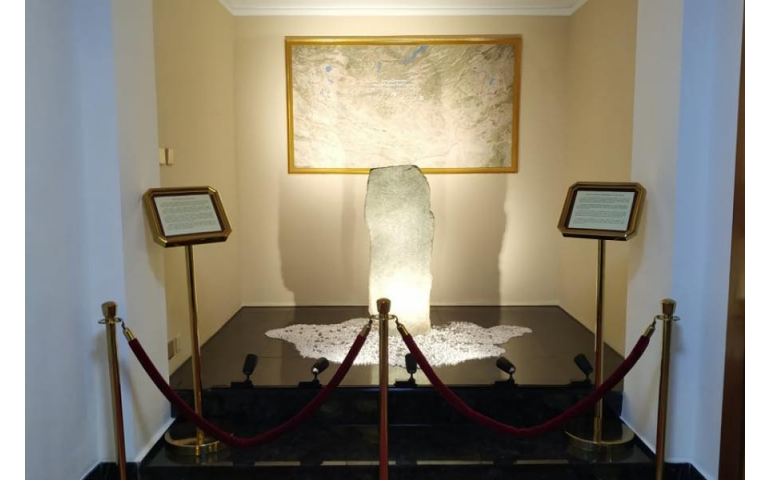TWO HISTORICAL HERITAGES OF MONGOLIA INSCRIBED ON THE MEMORY OF THE WORLD INTERNATIONAL REGISTER
Mongolia’s historical heritages, “Inscription of Khuis Tolgoi” and “A Complete Record of the Body by Imperial Order” have been inscribed on the Memory of the World International Register.
The 221st session of the UNESCO Executive Board convened in Paris, France, on April 2-17, 2025, and decided to inscribe 74 new items of documentary heritage nominated by countries on the Memory of the World International Register.
“Inscription of Khuis Tolgoi” is a rock engraving written in the Ancient Mongolian Language using the Brahmi Script, having 100 words with 215 characters. The Inscription of Khuis Tolgoi was found at a site called Khuis Tolgoi in Mogod soum, Bulgan aimag in 1967. Created in the Mongolian heartland over 1,400 years ago, it is an important source for studying the grammatical structure and lexicon of an ancient Mongolian language. Additionally, the scripture provides crucial insights into the spiritual beliefs of the nomadic people who inhabited the Mongol steppes. It supports claims that the tribal confederations and nomadic empires practiced Buddhism long before the rise of the Great Mongol Empire of Chinggis Khaan. This rock inscription demonstrates the deep and dynamic cultural exchanges between Asia’s regions, including India, Central Asia, and Northern Asia, as the texts are in the ancient Mongolian language but written in the Indian Brahmi script.
The manuscripts “A Complete Record of the Body by Imperial Order (Deger-e-eče toɣtoɣsan dursu-yin tusbur-yig burudkegsen bičig) provide information on Western and “Traditional” Eastern medicine from the mid-18th century. These texts serve as textbooks detailing the structure of the human body and the research of doctors in ancient Mongolian medical schools. Written in the ancient Mongolian script, the manuscripts contain a range of medical terms originating from Europe, translated into Mongolian, demonstrating the extensive cultural and knowledge exchange between the regions. The collection is one of the earliest forms of medical literature found in Mongolia that reflects both the unique characteristics of European and Eastern approaches to medicine.
Besides the newly inscribed two documentary heritages, there are five more documentary heritages from Mongolia on the list of the Memory of the World International Register, which are Lu.”Altan Tobchi”: Golden History and Mongolian Tanjur were inscribed in 2011, Kanjur written with 9 precious stones in 2013, Stone Stele Monument for Mongolian Tanjur in 2017, and Stone Inscriptions of Tsogt Khung-Taij, Prince of Khalkha in 2023.
Source:Montsam


